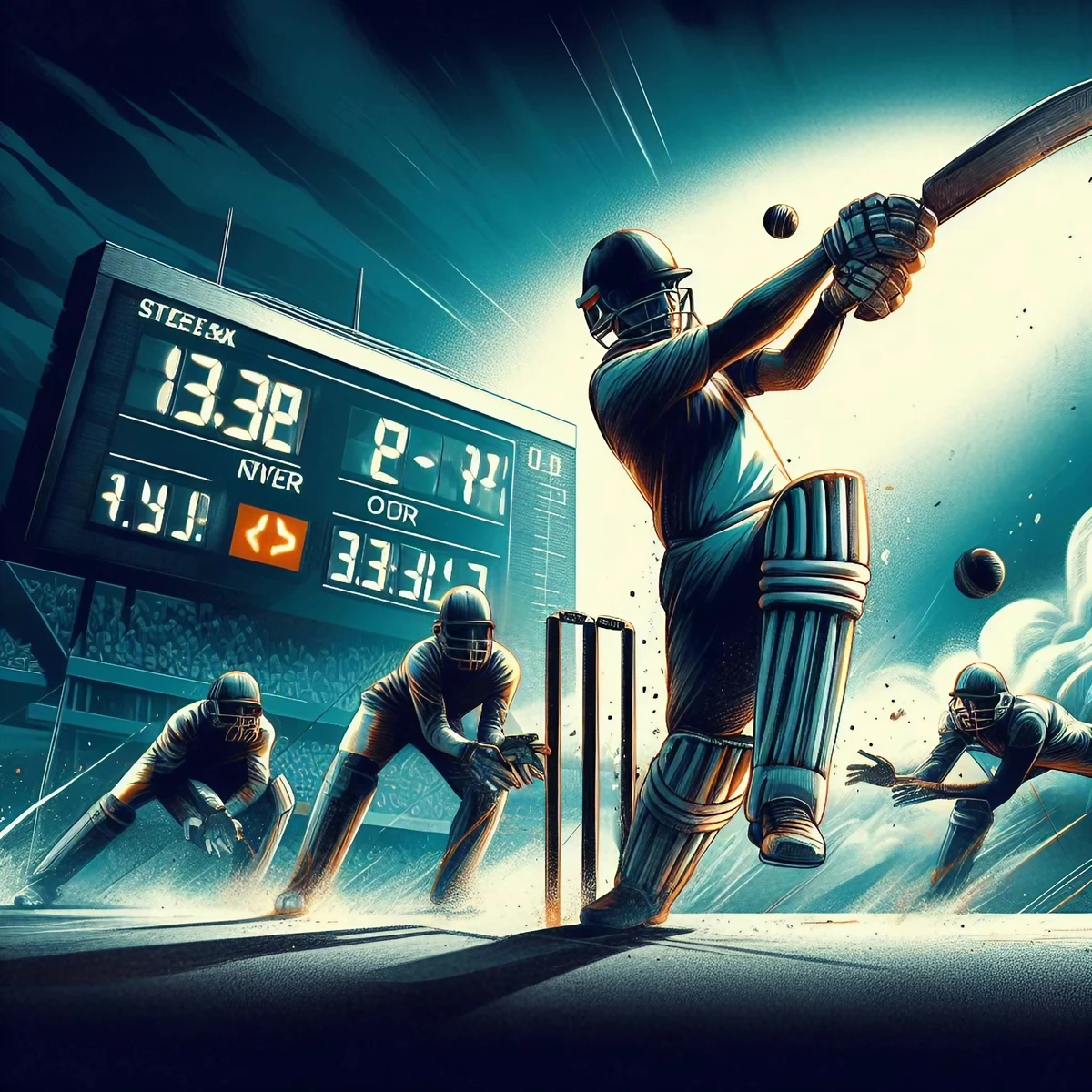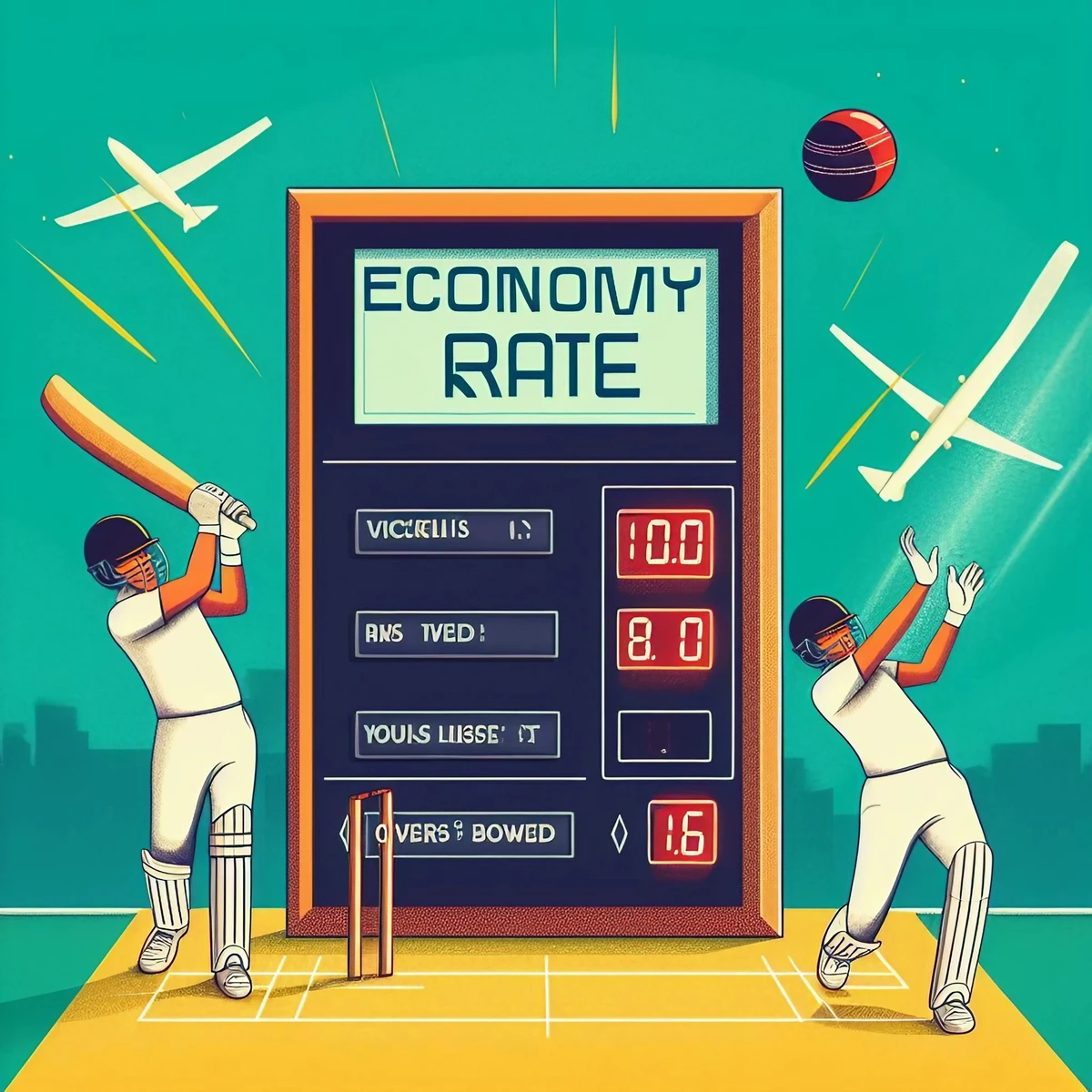Home » Cricket Calculators » Cricket Batting Strike Rate Calculator
Batting Strike Rate Calculator
Cricket Batting Strike Rate Calculator
Batting strike rate is a crucial statistic in the world of cricket that provides valuable insights into a player’s performance.
200% Spribe Aviator Welcome Bonus
200% Spribe Aviator Welcome Bonus
- Easy Sign-Up and Deposits
- Fast deposits with UPI
- 300% Welcome Bonus up to ₹10,000
In cricket, batting strike rate is a key metric that measures a batsman’s scoring tempo. It calculates the average number of runs a batter scores per 100 balls faced.
Strike rate is calculated by dividing runs scored by balls faced, multiplied by 100. For example, if a batsman scores 150 runs in 120 balls, their strike rate is (150/120)*100 = 125.
A higher strike rate indicates a batter is scoring runs quickly by hitting boundaries and rotating the strike. Power hitters possess strike rates exceeding 140 or 150. Anchor batsmen may have strike rates around 100.
Calculating strike rates provides insight into batting styles and efficiencies. Comparing strike rates helps gauge a batsman’s aggressiveness against others. Strike rate carries extra importance in limited overs cricket where scoring quickly is vital.
By quantifying scoring tempo, batting strike rate is an invaluable statistic for assessing batter performances across formats. It highlights differences in batting approaches as well.
What is Batting Strike Rate in Cricket?
Batting Strike Rate in cricket is a measure of how quickly a batsman scores runs. It is calculated by dividing the number of runs scored by the number of balls faced and then multiplying the result by 100.
This gives the average number of runs scored per 100 balls faced.
Here’s the key takeaways:
TL;DR
Hide- The batting strike rate is a vital statistic in cricket that provides valuable insights into a player’s performance.
- It measures how quickly and effectively a batsman can score runs. Various factors, such as pitch conditions, player skill, and match situation, can influence the strike rate.
- Analyzing strike rate data can be immensely helpful for teams and analysts in making decisions about team selection, devising strategies, and nurturing player development. Therefore, it plays a crucial role in the game of cricket.
Definition and Formula of Strike Rate
The batting strike rate in cricket is calculated by dividing the total number of runs scored by a batsman by the total number of balls faced, and then multiplying it by 100.
It is a crucial statistic that measures a batsman’s ability to score runs quickly and efficiently. A high strike rate indicates that a batsman is able to score runs at a fast pace, putting pressure on the opposition bowlers.
The impact of a batsman’s strike rate on the team’s performance is significant. A high strike rate can help the team in setting or chasing challenging targets, as it increases the scoring rate and puts the opposition under pressure. It also provides momentum to the batting side and can demoralize the fielding team.
Here’s the formula:
Batting Strike Rate = (Number of Balls Faced ÷ Number of Runs Scored) × 100
For example, if a batsman scores 40 runs off 30 balls, their strike rate would be:
Strike Rate = (30 ÷ 40) × 100 = 133.33
This means the batsman scores, on average, 133.33 runs for every 100 balls faced. A higher strike rate is generally seen as indicative of more aggressive batting, as it means the batsman is scoring runs more quickly.
For example, if a batsman scores 50 runs in 60 balls, their strike rate would be 83.33. This means that they score runs at an average of 83.33 runs per 100 balls faced.
The Importance of Batting Strike Rate in Cricket
The batting strike rate is an important metric in cricket, measuring a batsman‘s ability to score runs quickly and efficiently. It calculates the number of runs scored by a batsman per 100 balls faced.
A high strike rate indicates that a batsman can hit boundaries frequently, while a low strike rate suggests a more defensive approach.
Understanding the significance of the batting strike rate is crucial for individual players and team strategies. In cricket, time is limited, and every run counts.
A high strike rate puts pressure on the opposition, forcing them to change their bowling tactics. It also helps in building momentum and partnerships, which are vital for a successful innings.
Batting strategies often revolve around strike rate calculations. Aggressive players aim to maintain a high strike rate by taking calculated risks and playing attacking shots.
On the other hand, defensive players focus on building partnerships and preserving their wickets, resulting in a lower strike rate.
- Net Run Rate Calculator: How to Calculate Run Rate in Cricket
- Cricket Batting Average Calculator
- Cricket Batting Strike Rate Calculator
- Cricket Bowling Average Calculator
- Cricket Bowling Strike Rate Calculator
- Cricket Economy Rate (Econ) Calculator
- Cricket Follow On Calculator
- Cricket Runs per Over Calculator
The psychological impact of a high or low strike rate should not be underestimated. Batsmen with a high strike rate can demoralize the opposition, instilling fear and uncertainty.
Conversely, batsmen with a low strike rate may face criticism for slowing down the run-rate and putting pressure on the team.
Factors Affecting Batting Strike Rate
Several factors can have a significant impact on a batsman’s strike rate in cricket. The playing conditions and pitch conditions play a crucial role in determining the pace and bounce of the ball, which in turn affects the batsman’s ability to score quickly.
Additionally, a batsman’s technique and style, including their shot selection and ability to rotate the strike, can also influence their strike rate.
It is important for batsmen to understand these factors so they can adapt their approach and maximize their scoring potential in different situations.
I. Playing Conditions and Pitch
Playing conditions and the state of the pitch have a significant impact on the batting strike rate in cricket. The conditions on the field, including the surface and the weather, play a crucial role in determining how easy or difficult it is to score runs.
The nature of the pitch also affects the speed at which the ball comes onto the bat, which can make it easier or harder for batsmen to play their shots.
Similarly, weather conditions like humidity and wind can affect the movement of the ball in the air or off the pitch, creating challenges for batsmen.
These factors require batsmen to adjust their gameplay accordingly, which ultimately affects their strike rate.
Now, let’s move on to the next section to explore how batting technique and style contribute to the calculation of the batting strike rate.
II. Batting Technique and Style
Batting technique and style play a crucial role in determining a player’s strike rate. The approach a batsman takes, their shot selection, and their ability to rotate the strike all contribute to their strike rate.
Different batting techniques and styles can affect the rate at which runs are scored. For instance, aggressive batsmen who rely on power-hitting and take risks tend to have higher strike rates, while defensive batsmen who focus on building an innings have lower strike rates.
Additionally, a player’s ability to adapt their technique and style to different match situations can also influence their strike rate.
Therefore, analyzing and understanding the various batting techniques and styles is essential in accurately calculating the batting strike rate.
Examples of Strike Rate Calculation
Calculating the batting strike rate in cricket involves considering a few important factors. These factors include the number of runs scored by a batsman and the number of balls they have faced.
By comparing the strike rates of different players, we can gain valuable insights into their batting performance.
Strike rate is a crucial metric for teams to consider when planning their match strategy, as it provides an indication of a player’s ability to score quickly and make an impact on the game.
Understanding the strike rate can help teams make informed decisions and strategize effectively.
Key Factors Influencing Batting Strike Rate
Understanding the calculation of batting strike rate in cricket requires considering several key factors that influence it. The strike rate of a batsman is not solely determined by their skill level; it is also influenced by their mindset and the team’s strategy.
The mindset of the player plays a significant role in their strike rate. A confident and aggressive mindset can lead to a higher strike rate as the player takes more risks and looks for scoring opportunities.
Conversely, a defensive or cautious mindset may result in a lower strike rate as the player focuses on preserving their wicket rather than scoring quickly.
The team’s strategy also directly impacts a batsman’s strike rate. If the team aims for quick runs, the batsman may be encouraged to play more aggressively, resulting in a higher strike rate.
On the other hand, if the team wants the batsman to anchor the innings and build a solid foundation, the strike rate may be lower.
Comparing Different Player’s Strike Rate
When comparing the batting strike rates of different cricket players, it’s important to consider their individual performances and contributions to the team. Analyzing their performance is crucial in determining the effectiveness of a player’s batting style.
By looking at their strike rate, we can assess how efficiently a player scores runs in a given number of balls faced. However, it’s equally important to consider the game’s context and the conditions under which the player performed.
For instance, a player with a lower strike rate might have played a more defensive role to stabilize the innings during a challenging phase of the game.
On the other hand, a player with a higher strike rate might have taken an aggressive approach to score quick runs.
Comparing batting styles allows us to understand the strengths, weaknesses, and contributions of different players to the team’s overall performance.
Importance in Match Strategy
When it comes to cricket match strategy, it’s important to consider the calculation of batting strike rates. The strike rate of a batsman has a direct impact on the performance of the team.
A high strike rate indicates that the batsman is scoring runs quickly, which puts pressure on the opposition and boosts the morale of the team.
On the other hand, a low strike rate can result in a slower run rate, making it challenging for the team to achieve or chase a target.
Moreover, the strike rate is closely linked to the outcome of the match. Batsmen with high strike rates often play a crucial role in the team’s success, while those with low strike rates can hinder the team’s chances of winning.
Therefore, calculating the strike rate is a crucial aspect of match strategy and can greatly influence the overall result of a cricket match.
Interpreting and Analyzing Strike Rate
Strike rate analysis provides valuable insights into a batsman’s efficiency and effectiveness in scoring runs in cricket. It involves looking at the number of runs a batsman scores per 100 balls faced.
A high strike rate indicates that a batsman scores runs quickly, while a low strike rate suggests a more cautious approach.
By analyzing strike rate, we can gain important information about a batsman’s playing style, decision-making, and ability to accelerate the scoring rate.
A high strike rate is often associated with aggressive batting, as it indicates a batsman’s ability to hit boundaries and score runs at a brisk pace.
This is particularly important in limited-overs formats like One Day Internationals and Twenty20 matches, where scoring quickly is crucial.
On the other hand, a low strike rate may suggest a more defensive approach, with the batsman focusing on preserving their wicket rather than taking risks to score quickly.
Analyzing a batsman’s strike rate over a period of time can also provide insights into their consistency and adaptability.
A consistent strike rate across different conditions and situations indicates a batsman’s ability to perform consistently well, while fluctuations in strike rate may highlight areas where improvement is needed.
5 Practical Applications of Batting Strike Rate
Batting strike rate is a valuable metric in cricket that helps assess a batsman’s contribution to the team’s overall scoring ability.
By analyzing a player’s strike rate, coaches and selectors can evaluate their performance and determine their impact on the team’s success.
Here are some practical applications of batting strike rate:
1. Determining Run-Scoring Potential
A high strike rate indicates that a batsman can score runs quickly, which is crucial in limited-overs formats like T20 and ODI. It helps identify players who can accelerate the scoring rate and put pressure on the opposition.
2. Comparing Player Performance
Strike rate allows for a direct comparison between batsmen, enabling evaluation of their ability to score runs at a faster pace and make valuable contributions to the team’s total.
3. Setting Targets and Strategies
The strike rate of batsmen can influence the team’s target-setting and batting strategies. Batsmen with high strike rates can be assigned roles to provide quick starts or finish the innings with a flourish.
4. Identifying Areas for Improvement
A low strike rate may indicate a lack of intent or an inability to score runs quickly. This information can be used to identify areas where a player needs to improve to have a greater impact on the team’s success.
5. Making Team Selections
Strike rate can be a crucial factor when selecting players for specific formats or assessing their suitability for different batting positions. It helps in choosing players who can adapt to different match situations and contribute effectively to the team’s success.
Conclusion
The batting strike rate is an important statistic in cricket that provides valuable insights into a player’s performance. It measures a batsman’s ability to score runs quickly and effectively. Factors such as pitch conditions, player skill, and match situation can influence the strike rate.
Analyzing strike rate data can help teams and analysts in team selection, strategy formulation, and player development, making it a crucial tool in the game of cricket.
Frequently Asked Questions
How do you calculate batsman strike rate?
A batsman’s strike rate is calculated by dividing the number of runs they have scored by the number of balls they have faced, multiplied by 100. For example, if a batsman scores 50 runs off 40 balls, their strike rate is 50/40 x 100 = 125.
What is the strike rate hit rate?
In cricket, strike rate and hit rate refer to the same thing – the measure of how quickly a batsman scores runs. It is calculated by dividing runs scored by balls faced. The terms are used interchangeably.
What is the strike rate in IPL?
In the fast-paced Twenty20 format of the IPL, a good strike rate is generally considered to be around 140-150. The overall strike rate across all IPL matches is around 130 runs per 100 balls. High strike rates are common due to the attacking style of play.
Claim up to ₹15,000 Welcome Bonus Now
Claim up to ₹15,000 Welcome Bonus Now
- UPI, Paytm, gPay & PhonePe withdrawals
- Fast deposits with UPI
- Available in four different Indian languages
What is good strike rate in ODI?
In One Day International cricket, a solid strike rate for batsmen is usually between 80-90 runs per 100 balls. The overall strike rate in ODI cricket is around 85. Scores of 100 off 100 balls or higher are considered excellent strike rates in the 50-over format.
Other Cricket Calculators
Latest Cricket Posts
Claim 200% Welcome Bonus
For a limited time, every new member can claim 200% Welcome Bonus upon registration up to ₹15,000. Read to bet?














